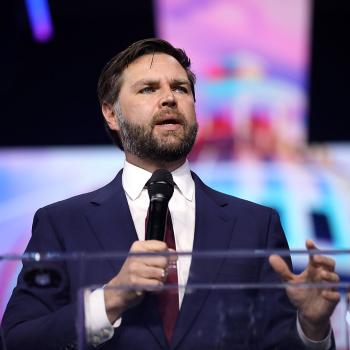Editors' Note: This article is part of a Public Square conversation on Alleviating Poverty. Read other perspectives here.
Ever wonder what Mormons do with their money? The Church of Jesus Christ of Latter-day Saints is a fast-growing institution that collects and distributes funds around the globe. The founding prophet, Joseph Smith, declared that a true saint with the love of God in one's heart "ranges through the whole world, anxious to bless the whole human race." Since the church's beginning, Mormons have sought to empower the poor and reduce human suffering.
Thus, the principle of tithing and other offerings have been a source of revenue to address the needs of the poor members and others, above and beyond missionary work, construction of chapels and temples, and other programs. The practice of serving the poor began to be greatly accelerated beginning in the 1980s, when church members fasted 24 hours and gave the equivalent of two meals to combat the crisis in East Africa, an amount generating $10 million. Food, clothing, emergency supplies, and cash were given through such agencies as the International Red Cross, AfriCare, Catholic Relief, and others.
Next was the establishment of the church's Humanitarian Services, a department at church headquarters to find other global needs and address them, with both monetary donations and technical expertise. The latter included such ventures as establishing irrigation systems in East Africa, digging wells in Nigeria, and providing medical services to poor countries.
The good done through this effort led in 1991 to establishing a huge LDS Humanitarian Center in Utah near church headquarters. Each year, from in-kind donations, it ships humanitarian kits—either newborn kits for new mothers, hygiene kits for those in natural disasters, or school kits for Third World children—all assembled by LDS youth. It also sends millions of pounds of donated clothing and shoes, medical equipment, and hand-tied quilts made by Mormon Relief Society members, the world's largest women's charity.
The center also provides employment, worker education and job skills for low income, international, and minority residents in the area, helping them to learn English so they may eventually move on to regular jobs in the private sector after 18 months. Refugees are assigned a Mormon mentor who provides coaching in work skills, resumes, and personal habits that will help develop successful job qualifications.
Having gradually developed expertise in broader humanitarian work beyond LDS members, the next step was the creation of LDS Charities, nonprofit dedicated exclusively to serving non-Mormons around the globe. It includes a range of services: employment centers, social services, the purchase of goods locally throughout the world, canneries and farms for food production and processing, and so forth. Relief and development projects have been implemented in some 180 nations. LDSC fits the view of another church leader, Joseph F. Smith, who taught, "Our idea of charity. . .is to relieve present wants and then to put the poor in a way to help themselves so that in turn they may help others." In other words, LDS Charities ignores religious affiliation, race, nationality, and seeks to operate on such values as community support, self-reliance, sustainability, and mutual care for one another.
Examples of LDS Charities' initiatives in response to natural disasters include the recent 2013 devastation by Typhoon Haiyan in the Philippines; the huge 9.0 earthquake that struck off Japan's north-east coast, causing destroyed towns as a tsunami followed; 1990's Hurricane Mitch in Central America; the 7.0 Haiti earthquake in 2010; 2005's Hurricane Katrina in the U.S.; the 2004 Indian Ocean earthquake and Asian tsunami, and more. LDSC has provided millions of dollars in cash and emergency relief. In addition to emergency supplies, its long-term efforts are community development programs such as clean water, neonatal resuscitation training, vision care, wheelchairs, immunizations, food production, health programs, and similar ventures tailored to the specific requirements.
With a few paid staff and thousands of volunteers, LDSC manages this non-profit program, often in cooperation with governments, the United Nations, and other NGOs such as the Islamic Relief Worldwide. Over a million man-days of labor are contributed yearly by Mormon volunteers as initiatives are designed and executed by the church.
Finally, I should mention the rise of personal, private NGOs created and funded through donations from Mormon families. These have accelerated greatly over the past several decades, as Latter-day Saints have been inspired to do more, above and beyond the efforts of the institutional church. Since the 1980s, Mormons have designed and implemented around 300 social enterprises, seeking to do good in their local communities and around the globe. Most operate without church or government funding of any kind, seeking to simply be development or aid organizations reaching out to the poor. I've been privileged to start or co-found a number of these, such as Sustain Haiti, HELP International, MicroBusiness Mentors, Unitus, Care for Life, Mentors International, and so on. Some 30 organizations have grown out of my MBA courses at Brigham Young University, where Mormon social and economic teachings are taught, in addition to traditional topics such as strategy, team-building, entrepreneurship, and organizational design.
In sum, throughout its history, but especially in the last few decades, the LDS Church and the Mormon people have sought to more fully practice what Christians are called to do, drawing on Jesus' teaching (Matthew 25:40): "Inasmuch as ye have done it unto one of the least of these my brethren, ye have done it unto me."
12/12/2013 5:00:00 AM




